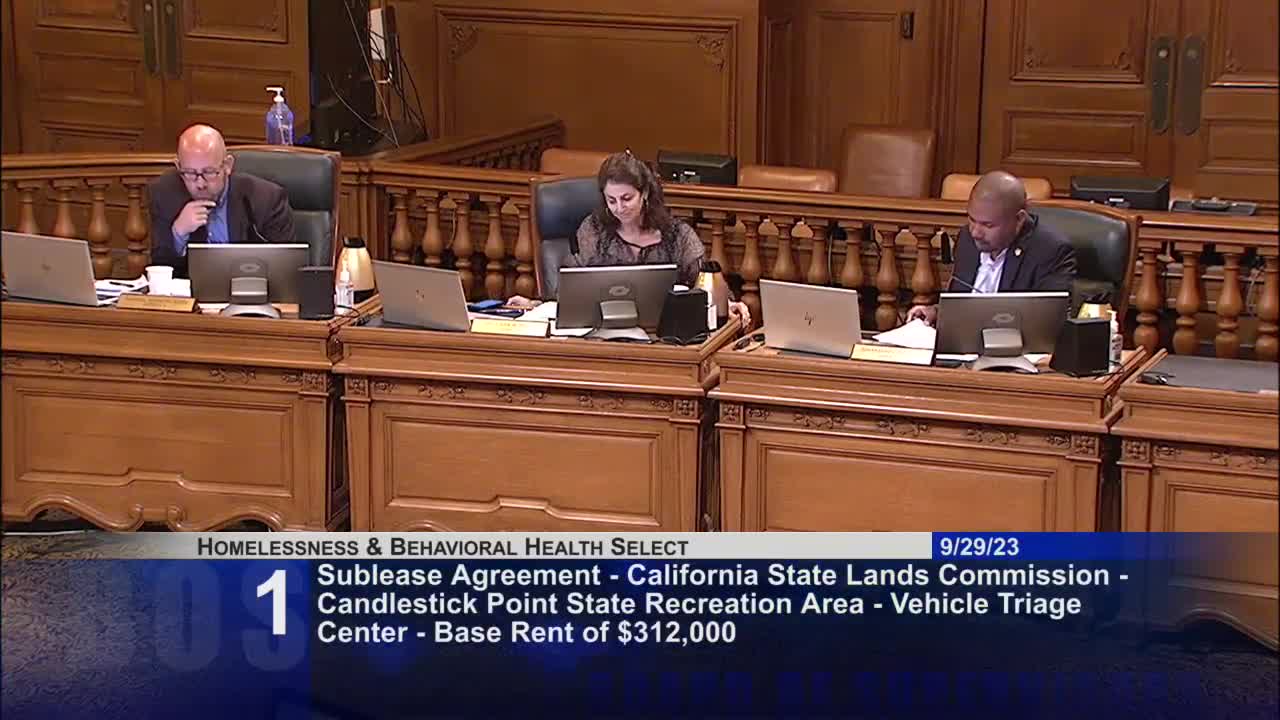San Francisco extends vehicle triage center to support homeless communities near Candlestick
September 29, 2023 | San Francisco County, California
This article was created by AI summarizing key points discussed. AI makes mistakes, so for full details and context, please refer to the video of the full meeting. Please report any errors so we can fix them. Report an error »

The San Francisco County government meeting on July 4, 2025, highlighted the ongoing challenges and solutions surrounding homelessness in the area, particularly focusing on the Vehicle Triage Center (VTC) established near Candlestick Park. The VTC has been instrumental in addressing the urgent needs of individuals and families living in vehicles, providing essential services and improving community conditions.
Prior to the VTC's opening, the Candlestick area faced significant issues, including blocked roadways, lack of restroom facilities, and unsanitary conditions due to waste accumulation. Residents and officials noted that these problems have been alleviated since the VTC began operations, which has allowed for better access to services and a cleaner environment. The center not only provides a safe space for those living in vehicles but also connects them with housing and medical support.
The meeting underscored the importance of maintaining the VTC as a short-term solution while working towards permanent housing options. Officials emphasized that without the VTC, the situation could regress, leading to more vehicles in residential areas and a lack of necessary services for the unhoused population. The center has garnered overwhelming community support, with many residents recognizing its positive impact.
In addition to the VTC discussions, the meeting addressed the financial aspects of homelessness interventions. Officials explained that while housing is ultimately the goal, the costs associated with shelters and temporary solutions can be misleading. The VTC's operational expenses include renting essential facilities like shower and bathroom trailers, which contribute to its overall cost. Despite these challenges, the consensus among officials is that the VTC is a vital component of the city's strategy to combat homelessness.
As the meeting concluded, there was a clear commitment from city leaders to continue supporting the VTC and exploring additional locations for similar centers across San Francisco. The ongoing dialogue with community members was highlighted as crucial in shaping effective responses to homelessness, ensuring that the voices of those directly affected are heard and considered in future planning.
Prior to the VTC's opening, the Candlestick area faced significant issues, including blocked roadways, lack of restroom facilities, and unsanitary conditions due to waste accumulation. Residents and officials noted that these problems have been alleviated since the VTC began operations, which has allowed for better access to services and a cleaner environment. The center not only provides a safe space for those living in vehicles but also connects them with housing and medical support.
The meeting underscored the importance of maintaining the VTC as a short-term solution while working towards permanent housing options. Officials emphasized that without the VTC, the situation could regress, leading to more vehicles in residential areas and a lack of necessary services for the unhoused population. The center has garnered overwhelming community support, with many residents recognizing its positive impact.
In addition to the VTC discussions, the meeting addressed the financial aspects of homelessness interventions. Officials explained that while housing is ultimately the goal, the costs associated with shelters and temporary solutions can be misleading. The VTC's operational expenses include renting essential facilities like shower and bathroom trailers, which contribute to its overall cost. Despite these challenges, the consensus among officials is that the VTC is a vital component of the city's strategy to combat homelessness.
As the meeting concluded, there was a clear commitment from city leaders to continue supporting the VTC and exploring additional locations for similar centers across San Francisco. The ongoing dialogue with community members was highlighted as crucial in shaping effective responses to homelessness, ensuring that the voices of those directly affected are heard and considered in future planning.
Don't Miss a Word: See the Full Meeting!
Go beyond summaries. Unlock every video, transcript, and key insight with a Founder Membership.
✓
Get instant access to full meeting videos
✓
Search and clip any phrase from complete transcripts
✓
Receive AI-powered summaries & custom alerts
✓
Enjoy lifetime, unrestricted access to government data
30-day money-back guarantee

